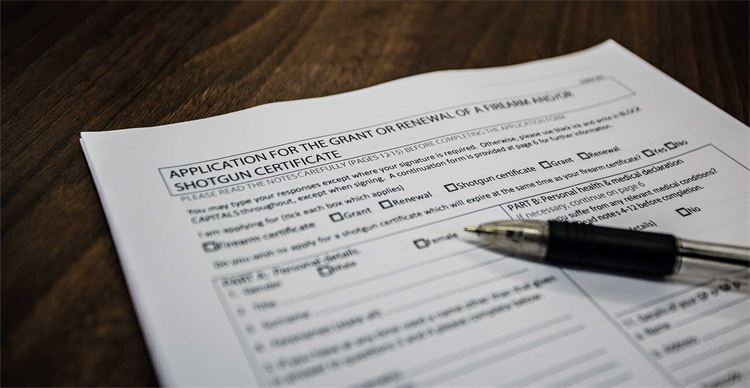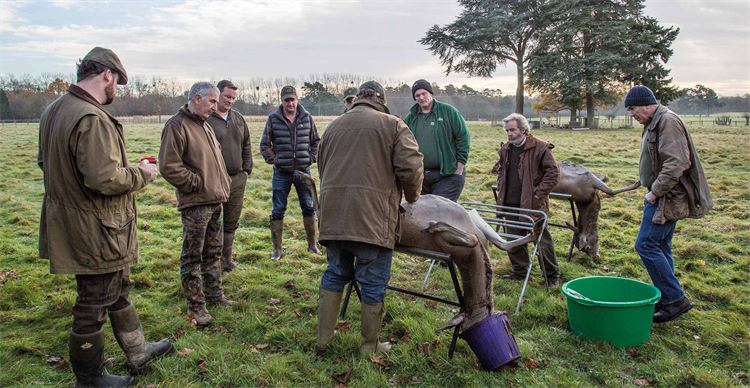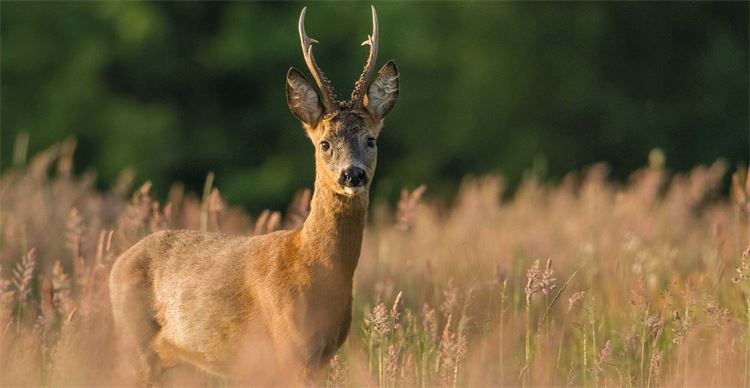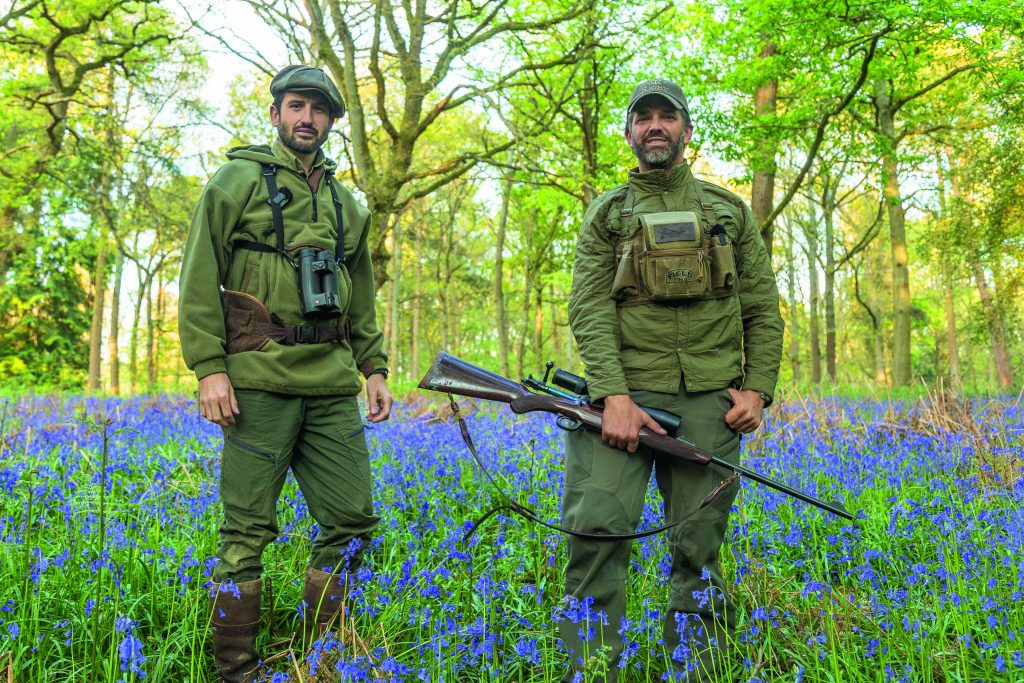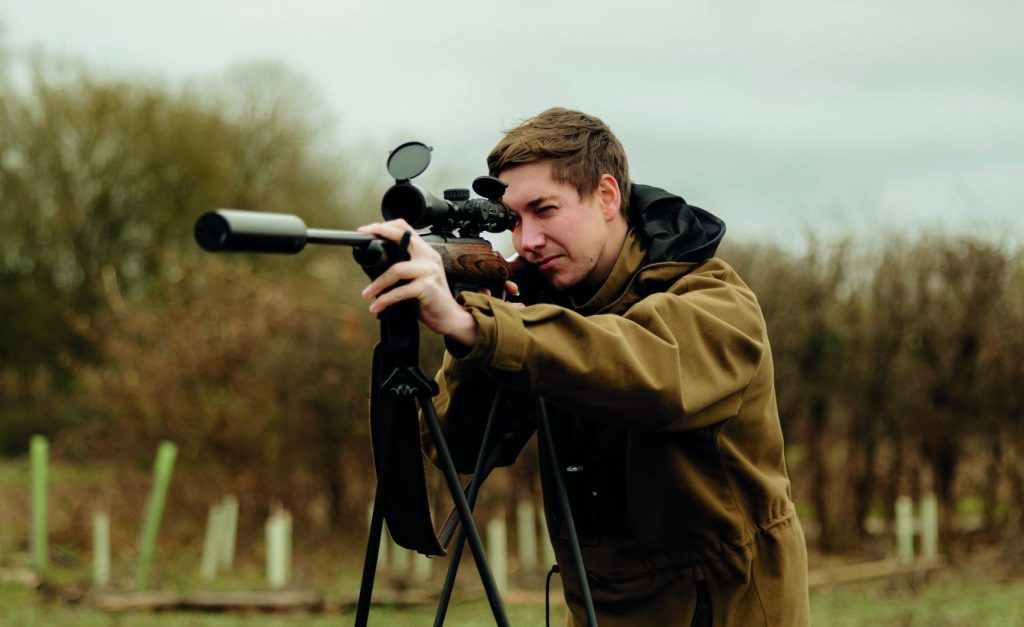How to get into deer stalking
We outline some of the most common quandaries among those just beginning their journey into deer stalking, starting with where to learn, Firearms Certificate application and a basic rundown on kit, with the help of Corinium Rifle Range.

After stalking your first deer, it will come as no surprise that deer stalking is rapidly growing in popularity in the UK. Fieldsports enthusiasts continue to explore – at an increasing rate – the wholesome opportunities presented by the six deer species that call the British Isles home. But just how easy is it to make the transition from shooting vermin, game or wildfowl species with a shotgun, to stalking deer with a large calibre rifle?
I fall into the same category as many others; for years I’ve enjoyed sport with a shotgun, but deer always represented that next step – a curiosity that seemed slightly out of reach, with possibilities to get out stalking limited. Or so it seemed until relatively recently.
A memorable introduction last spring (more on that another time) and a number of guided trips out since – stalking roe, muntjac and red deer – have me hooked. Well and truly. And, on my journey to taking up the sport in earnest, I’ve crossed the minefield of uncertainties that I’ve no doubt so many others in my position have, too.
There’s a lot to learn – not only for the sake of safety and ethics, but to get the most out of one’s stalking. And so, rather than be put off by what at first appears to be a great deal of paperwork and a glut of questions, I got in touch with Paul Hill, the owner of Corinium Rifle Range in Wiltshire – a man with a wealth of experience in both professional deer management and introducing newcomers to the sport of stalking.
My first visit to Corinium consisted solely of coffee, biscuits and an in-depth chat – not a rifle in sight. This was important; Paul’s a big advocate of training sessions where clients can absorb information rather than be overloaded with it, and this helped both of us establish my requirements, i.e. the nature of the majority of my stalking and the species I hope to stalk. This would then translate not only to the main shooting positions I would focus on during range sessions, but also a suitable calibre being penned on my Firearms Certificate (FAC) application.
To the novice, applying for a FAC might seem a daunting and laborious task, but with a bit of help from someone with experience, one can ensure that they are ‘ticking all the right boxes’. It’s no secret that constabularies across the country vary enormously when it comes to dealing with FAC applications, so it’s important to make your local Firearms Enquiry Officer’s (FEO) job as easy as possible.
The focus of this article is to provide the newcomer with some brief and basic answers to a number of the most common quandaries. Indeed, volumes could be written on each point outlined. Ultimately, the value of enrolling on a training course like those offered by Paul at Corinium Rifle Range, cannot be emphasised enough.
Appropriate choice of calibre(s): In England and Wales, the minimum legal calibre of rifle which may be used for stalking all deer species is .240″ with a minimum muzzle energy of 1,700ft/lbs. Muntjac and Chinese water deer may be shot with a calibre of not less than .220″, a muzzle energy of not less than 1,000ft/lbs, and a bullet weight of not less than 50 grains (gr).
The law in Scotland is different. For all deer except roe deer, the bullet must weigh at least 100gr and have a minimum muzzle velocity of 2,450 feet per second (fps) and a minimum muzzle energy of 1,750ft/lbs. For roe deer, on the other hand, the bullet must weigh at least 50gr and have a minimum muzzle velocity of 2,450fps and a minimum muzzle energy of 1,000ft/lbs. The requirements for Northern Ireland vary again, and can be found on the BASC website.
It’s important to match your choice of calibre with the type of stalking you will be doing. Many estates in Scotland, for example, will not let you shoot red deer with a .243, whilst a .300WSM would generally be considered a little ‘overkill’ for those who will be stalking roe and muntjac in the lowlands.
Everyone has their own opinion when it comes to the best all-round calibre for deer species in the UK, but the .308, 6.5×55, .243 and .30-06 are popular for good reason. Essentially, the objective is to choose a calibre which has the knockdown capability if shot placement is very slightly off, whilst keeping meat damage to a minimum, and being comfortable to use and easy to find ammunition for.
Sound moderator: If you plan to attach a moderator to your rifle, you will need to apply for one on your FAC. For many this is a no-brainer as it reduces disturbance and recoil. A range of models are available, at different prices, weights and dimensions. Bear in mind how each might affect the balance of your rifle.
Good reason: When applying for your FAC, you are required to state the reason for requiring the individual calibre(s) you have applied for; owning a rifle in the UK is a privilege, not a right.
For deer stalking calibres, evidence of requirement can take several forms – permission to shoot/manage deer on private land, and a booking or invitation to go deer stalking are examples. If one wishes to shoot other quarry with the same calibre – foxes, for example – this must also be made clear.
The smaller the number of calibres you apply for, the easier you are making it for your FEO who may be reluctant to grant several calibres to a first-time applicant. Remember, it is much easier to apply for a variation on your ticket at a later date if you want a number of calibres for different purposes.
Ammunition: For deer stalking, ammunition must be soft point or hollow-nosed and adhere to the stipulations detailed previously. The FAC application form asks you to detail the maximum amount of ammunition to be possessed – make sure you request sufficient so that you are not constantly having to return to the gun shop and then re-zero your rifle when you buy a new batch.
Individual rifles, even when of the exact same make, calibre and model, tend to have preferred ‘diets’, i.e. they will shoot better or worse with different cartridge makes and types. Therefore, testing a variety of ammunition at your local rifle range is well worth the time. Generally, cheaper rifles are more ‘diet conscious’.
When thinking about bullet weight and speeds, it is worth remembering that a heavier bullet at moderate velocities will cause less carcass damage than a light, fast bullet, whilst transferring more energy with better penetration.
Conditions: It is not uncommon for first-time FAC applicants to have a condition, or several conditions, attached to their FAC. This might mean that for the first year or so, a novice can only stalk when accompanied by an experienced person, or he/she may only be allowed to use the rifle on specified areas of land that have been surveyed by the FEO.
Experience and qualifications: Numerous courses now exist that are designed to provide the novice with a good understanding of the basics. The Stalkers’ Training Programme at Corinium is a prime example and was developed after lengthy consultation with various constabularies and individuals regarding the qualifications, training and experience which are required to gain an FAC for stalking purposes. The programme includes recognised qualifications such as Firearms Awareness Training and Deer Stalking Certificate Level 1 (DSC1), as well as a practical carcass handling and gralloching course, club membership, guided stalks, range time and training – all of which set the candidate in good stead.And it goes without saying that improving one’s fieldcraft and understanding of deer ecology and behaviour should be high on the priority list for any novice stalker; we owe it to our quarry.
If you’ve just started to explore the sport, it is of course best to focus on sound training and building such knowledge before rushing out and buying all the kit, but it’s understandable that those serious about getting into deer stalking yearn for a rough idea of what they will need and how much this is likely to set them back. Below is a rough outline of the basics.
Cabinet: Essential for all firearms holders. See the BASC website for further detail.
Ammunition safe: The separate lockable compartment in a standard cabinet is generally not considered suitable for ammunition and the bolt – both of which should be stored separately from the rifle(s). Small caravan safes are inexpensive and ideal.
Slip and cleaning kit: Both essential to protect your rifle, and the latter to prolong barrel life. Bear in mind that after cleaning the inside of the bore, it can take several shots for a rifle to ‘settle down’ again and shoot as it did when zeroed.
Rifle: Once you have decided on a calibre, you will then need to choose from action type, material (wooden or synthetic), grip shapes, barrel length and weight/type, the safety mechanism, trigger, twist rates – all variables which will be determined by the nature of your stalking, personal preference and how much you have to spend. A bolt-action rifle with a detachable magazine and a 23″ floating barrel which is screw-cut for a moderator is generally considered both practical and effective for UK stalking. Synthetic stocks and stainless steel barrels are easy to clean and more durable, but some prefer the aesthetics of a wooden stock and blued barrel.
Comb raiser: According to Paul, gunfit is very often overlooked when it comes to rifle shooting – particularly comb height. Rifles are generally stocked for open sights and so when a scope is attached atop mounts, to achieve correct eye relief through the scope, a person’s cheek must be raised high above the comb. A simple comb raiser which wraps around the stock allows the shooter to achieve a proper cheek weld whilst looking through the scope. This helps with fast and consistent target acquisition, whilst being much more comfortable.
Ammunition and moderator: As alluded to previously, don’t skimp on ammunition, and spend some time experimenting with a range of rounds to find the one that suits your rifle and your requirements best. Moderators should always be removed whilst not in use to prevent corrosive gases from eating away at the rifling at the end of a barrel.
Optics and mounts: ‘Buy a scope and put a rifle underneath it’ is the frequently given advice. Remember, a good pair of binoculars and a scope will last you a very long time and paying for quality can be the difference between being able to see and not being able to see during those golden minutes at dawn and dusk. Research ‘exit pupil’ and you will glean a good idea of the effects of magnification and objective lens size on light transmission. Fixed magnification scopes (6×42, 7×50 and 8×56 all being popular) are less expensive than variable magnification models. Think about whether you need an illuminated reticle and, indeed, the style of reticle you prefer.
Investing in quality mounts which attach your scope to the rifle is advisable – again, you get what you pay for.
When shopping for binoculars, consider weight and field of view; high magnification is not necessarily the best option.
Knife: A knife is an essential piece of kit for the stalker. Most stalkers keep several, each with its own purpose when gralloching and handling a shot animal. There are some beautiful handmade options available, but inexpensive, practical knives can be picked up for as little as £10–£15. They should be easy
to clean and sharpen, with a non-slip handle.
Sticks and bipods: When woodland stalking, the majority of shots will be taken off sticks, of which there are numerous designs. Weight, ease of use, and stability when deployed are key. Quadsticks are now favoured by many as they provide support for both the fore-end and stock of the rifle. Once bought, practice is crucial (the focus of the next article in this series).
Bipods are attached to the fore-end of the rifle and are an excellent alternative to using a rucksack, rolled-up coat or otherwise when shooting from a prone position. Invest in a good quality model which is easy to deploy and adjust.
Related Articles
Get the latest news delivered direct to your door
Subscribe to Fieldsports Journal
Elevate your experience in the field with a subscription to Fieldsports Journal, the premium publication for passionate country sports enthusiasts. This bi-monthly journal delivers unparalleled coverage of game shooting, fishing and big game across the UK and beyond.
Each issue offers a stunning collection of in-depth features, expert opinions and world-class photography, all presented in a timeless yet contemporary design.
Save 10% on shop price when you subscribe, with a choice of packages that work for you. Choose from Print & Digital or Digital only with each journal delivered directly to your door or via the app every other month, plus access to past issues with the digital back issue library.






